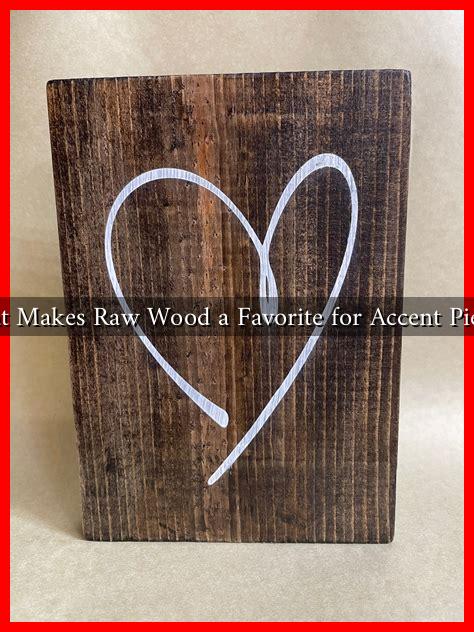-
Table of Contents
What Makes Raw Wood a Favorite for Accent Pieces?
In the world of interior design, raw wood has emerged as a beloved material for accent pieces. Its natural beauty, versatility, and sustainability make it a top choice for homeowners and designers alike. This article explores the reasons behind the popularity of raw wood in accent pieces, highlighting its aesthetic appeal, environmental benefits, and practical applications.
The Aesthetic Appeal of Raw Wood
One of the primary reasons raw wood is favored for accent pieces is its unique aesthetic. Each piece of wood tells a story, showcasing its grain patterns, knots, and imperfections. This individuality adds character to any space. Here are some key aesthetic benefits:
- Natural Beauty: The organic look of raw wood complements various design styles, from rustic to modern.
- Warmth and Texture: Wood adds warmth to a room, creating a cozy atmosphere that synthetic materials often lack.
- Versatility: Raw wood can be stained, painted, or left unfinished, allowing for endless customization options.
For example, a raw wood coffee table can serve as a stunning centerpiece in a contemporary living room, while a reclaimed wood shelf can enhance the charm of a farmhouse-style kitchen. The adaptability of raw wood makes it suitable for various applications, from furniture to decorative accents.
Environmental Benefits of Raw Wood
As sustainability becomes increasingly important in design, raw wood stands out as an eco-friendly choice. Here are some environmental advantages:
- Renewable Resource: Wood is a renewable material, especially when sourced from sustainably managed forests.
- Carbon Sequestration: Trees absorb carbon dioxide during their growth, making wood products a carbon sink.
- Biodegradable: Unlike plastic or metal, wood is biodegradable, reducing landfill waste.
According to the Forest Stewardship Council (FSC), responsibly sourced wood can significantly reduce the environmental impact of construction and design. By choosing raw wood for accent pieces, consumers can contribute to a more sustainable future.
Practical Applications of Raw Wood in Design
Raw wood is not only aesthetically pleasing and environmentally friendly; it is also highly functional. Here are some practical applications of raw wood in interior design:
- Furniture: Tables, chairs, and benches made from raw wood provide durability and timeless appeal.
- Decorative Accents: Items like wooden bowls, sculptures, and wall art can enhance the visual interest of a space.
- Architectural Elements: Exposed beams, wooden paneling, and flooring can create a cohesive design theme.
For instance, a raw wood dining table can serve as a gathering place for family and friends, while wooden wall art can serve as a conversation starter. The versatility of raw wood allows it to fit seamlessly into various design schemes.
Case Studies: Successful Use of Raw Wood in Design
Several designers and brands have successfully incorporated raw wood into their projects, showcasing its appeal:
- Restoration Hardware: This brand features raw wood in many of its furniture collections, emphasizing its rustic charm and durability.
- Studio McGee: Known for their modern farmhouse aesthetic, they often use raw wood accents to create warmth and texture in their designs.
- Local Artisans: Many local craftsmen create unique raw wood pieces that reflect the character of the region, supporting local economies and sustainable practices.
These examples illustrate how raw wood can be effectively utilized in various design contexts, appealing to a wide range of consumers.
Conclusion
Raw wood has become a favorite for accent pieces due to its aesthetic appeal, environmental benefits, and practical applications. Its unique beauty and versatility allow it to fit seamlessly into various design styles, while its sustainability makes it an eco-friendly choice. As more consumers prioritize sustainability in their purchasing decisions, the popularity of raw wood is likely to continue growing. By incorporating raw wood into their spaces, homeowners can create inviting, stylish environments that reflect their values and personal style.
For more insights on sustainable design practices, visit Forest Stewardship Council.


